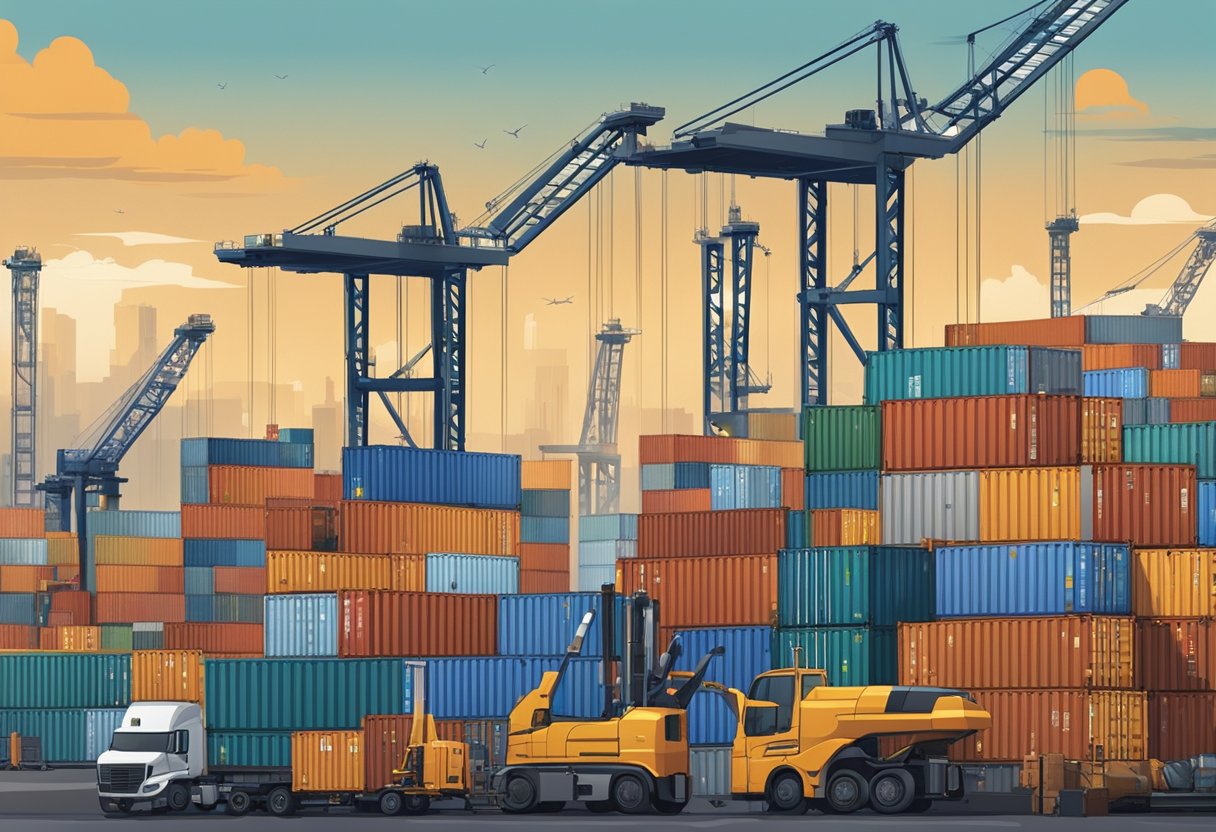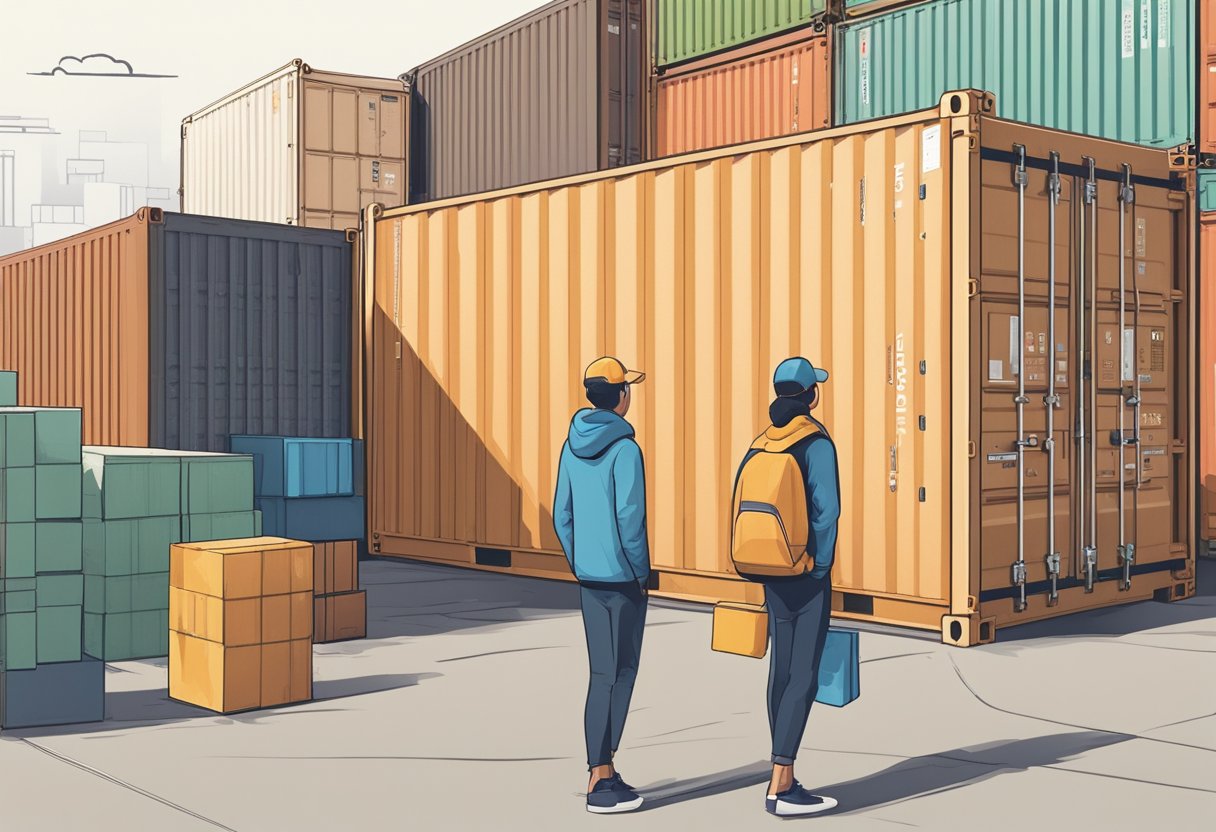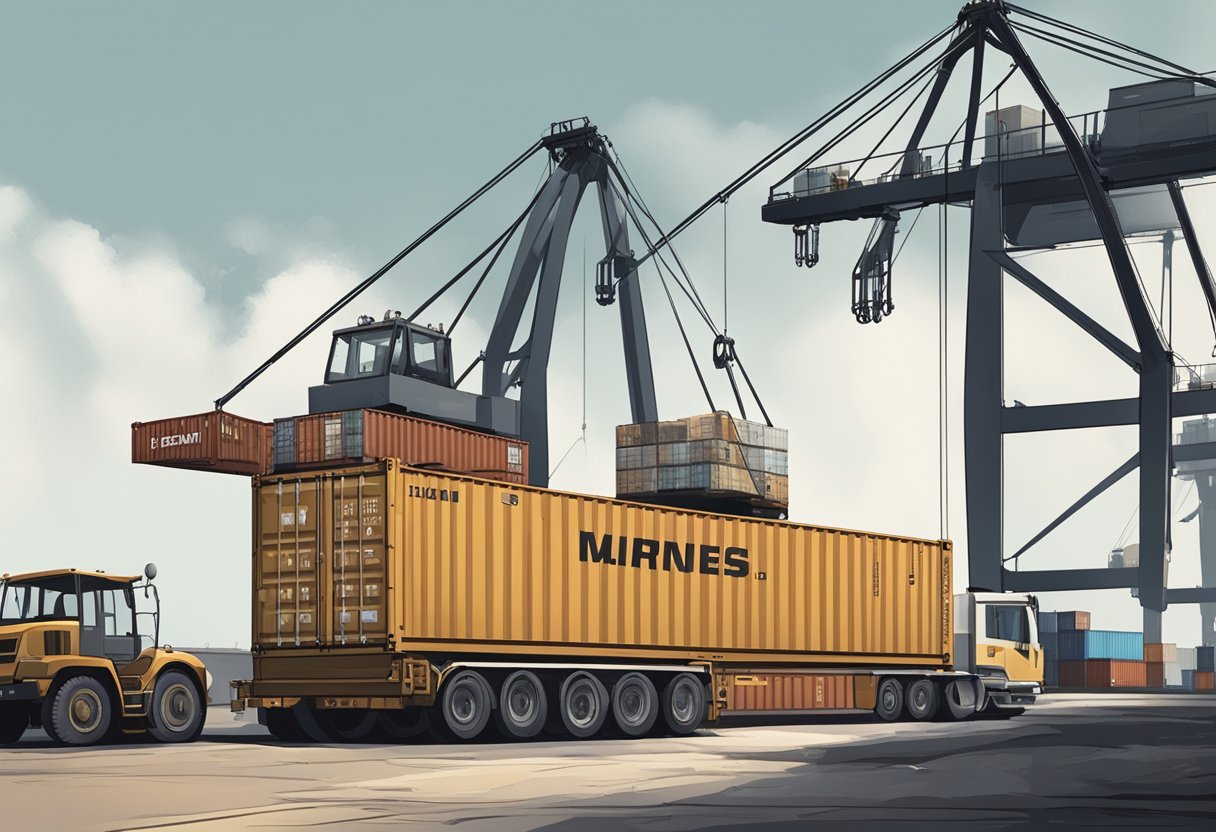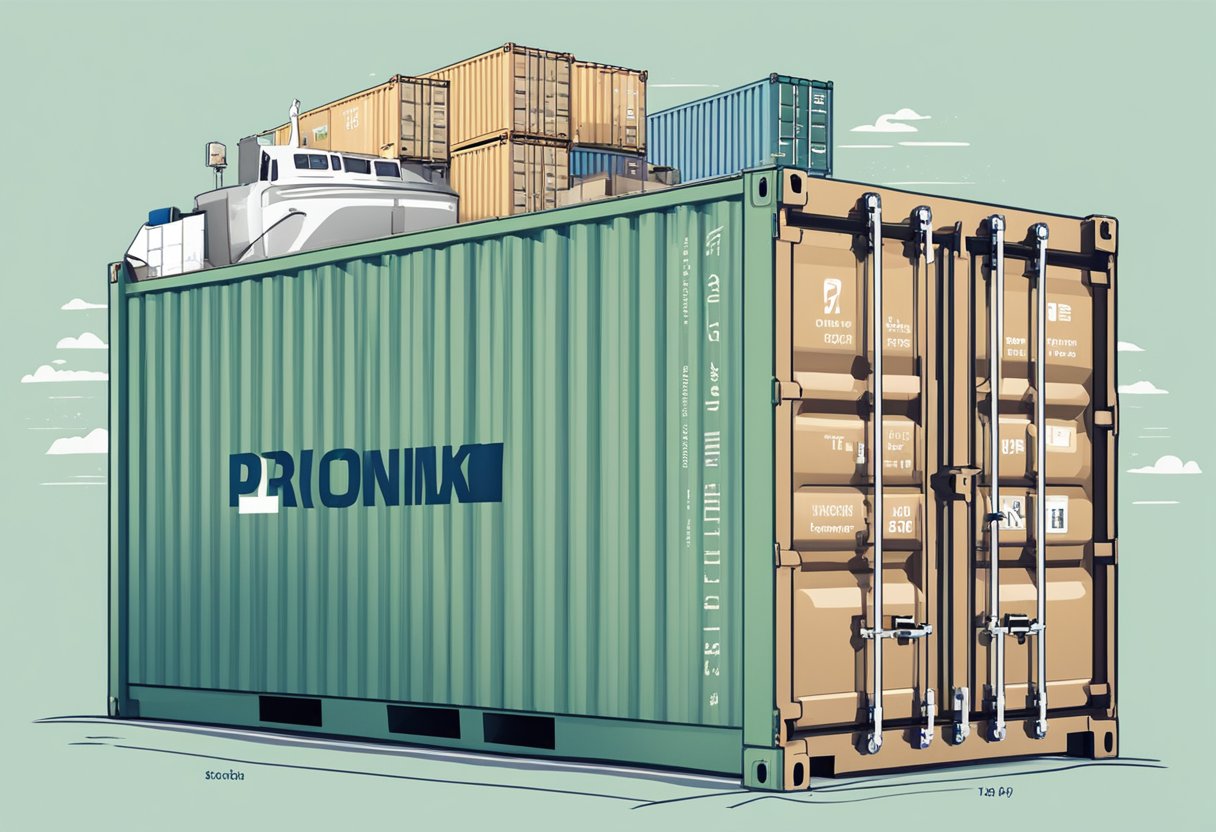The cost of a shipping container can vary widely depending on several factors, including size, condition, and location. Prices for these versatile steel boxes—used for shipping goods, storage, and even as building materials for homes and offices—are influenced by the current market, the container’s age, and any modifications it may have undergone. Whether buying or renting, individuals and businesses must consider their budget and needs to make an informed decision.

A new 20-foot shipping container typically ranges from $2,000 to $5,000, with used containers of the same size costing between $1,400 to $3,000. The price tag reflects the container’s durability and readiness for use in various applications. For larger sizes, such as 40-foot containers, prices may be slightly higher, especially for those seeking additional features like high cube options, which provide extra vertical space. Renting a container could be a more affordable short-term solution, though monthly fees and delivery costs could add up over time.
Anyone in the market to purchase a shipping container would encounter different pricing levels, which are influenced by the supply chain status. Potential buyers should anticipate additional costs, such as delivery charges or modifications, while those looking to rent must consider the rental period and potential extra fees for pickup, drop-off, and maintenance. The decision between buying and renting ultimately hinges on the intended use, duration of need, and financial feasibility, which requires a careful assessment of the market and one’s specific needs.
Types of Shipping Containers
When selecting shipping containers, one must consider the variety of types available. Each container type serves a specific purpose and comes in different sizes, making it crucial to match the container to the cargo it will carry.
Standard Containers
Standard containers, also known as dry containers, are the most common type used in the shipping industry. They typically come in two sizes: 20ft and 40ft. A 20ft container is suited for most cargo types and is commonly available as a used container. The 40ft container offers double the capacity for larger shipments.
High Cube Containers
High Cube containers are similar to standard containers but with an additional foot in height, providing a total height of 9ft 6inches. Ideal for light, voluminous cargo or bulky items, they are available in both new and used conditions. Due to their size, a new High Cube container will generally cost more than a standard one.
Reefers
Reefers, or refrigerated containers, are specialized for transporting perishable goods that require temperature control. They are predominantly found in 20ft and 40ft sizes and are essential for maintaining the quality of food items or pharmaceuticals during transit. The cost varies based on the size and whether it is new or used.
Open Side Containers
Open Side containers provide the ability to load cargo from the side, offering flexibility for wider or irregularly shaped items. The doors that open on the side can be beneficial for loading and unloading procedures. Like other types, they can be bought as new or cargo-worthy used containers, with their prices reflecting their condition and availability.
Determining Costs
When considering the acquisition of a shipping container, there are several cost factors that need to be assessed. Understanding these can help in making an informed decision about purchasing or leasing a container for storage or shipping needs.
Buying New vs. Used
New containers offer the advantage of pristine condition, but they come with a higher price tag. On the other hand, used containers can provide significant savings. It is common to find used shipping containers that are labeled as ‘cargo worthy’ which means they are deemed fit for shipping goods internationally. The cost of a used container may vary widely depending on its condition and age.
Renting vs. Buying
Renting a container can be a more cost-effective solution for short-term needs, eliminating the commitment of a purchase and reducing upfront costs. Lease options offer flexibility, allowing for the return of the container after use. The rent is typically set on a monthly basis and will depend on the size and specifications of the container.
Size and Specifications
Shipping containers come in various sizes and specifications, influencing their price. Common sizes include the 20-foot and 40-foot containers, with the larger ones generally costing more. Specialized containers, such as those with temperature control or open sides, can also be more expensive due to their added features.
Condition and Age
The condition and age of a shipping container are critical in determining its cost. A new shipping container will not have any signs of wear and will be the most expensive option. Used containers are graded based on their condition, with ‘wind and water tight’ (WWT) being a step below ‘cargo worthy.’ The older and more worn the container, the less expensive it will likely be, although its suitability for certain uses may be compromised.
Using a container shipping cost calculator can help in getting a clear understanding of shipping expenses. It factors in the size, age, and other specifications to give an instant estimate that aids in budget planning.
Factors Influencing Price

The cost of a shipping container is not static and is influenced by a variety of factors, each playing a significant role in the final pricing. Understanding these can help potential buyers anticipate and plan for the costs involved.
Location and Distance
The initial point of purchase and the final destination of a shipping container greatly influence the price. Containers located at ports or near manufacturing sites are often less expensive due to lower transportation costs. Conversely, the farther a container needs to be transported, the higher the shipping container transport cost. Transport prices vary depending on whether the route requires road, rail, or sea travel and the complexity of the route.
Supply and Demand
The market’s supply and demand dynamics are pivotal in determining prices. High demand for containers in a market with limited supply can drive up prices significantly. Conversely, oversupply can lead to more competitive pricing. The fluctuation in global container demand affects the supply chain, which in turn impacts the cost buyers can expect to pay.
Delivery and Transportation
Once a shipping container is purchased, the cost of delivery and additional freight rates come into play. The type of transport—whether intermodal (utilizing multiple modes of transport such as ship and train) or a singular mode—can affect the cost. Other factors such as the availability of equipment and labor, warehousing needs, and the urgency of shipment influence transportation costs. For instance, expedited shipping can add to the expense due to the increased resources necessary to meet tighter deadlines.
Practical Considerations

When assessing the feasibility of a shipping container for specific needs, it is essential to consider not only the cost but also the practical aspects such as security features, potential for modifications, and the maintenance required to keep the container in optimal condition.
Security Features
Shipping containers are constructed to withstand the rough conditions of transport, making them inherently secure. However, additional security features may be needed depending on the intended use. It’s recommended to check for lockable doors and consider installing security locks or alarm systems to prevent unauthorized access.
Modifications and Customization
Customization is a significant aspect of shipping container usage beyond cargo transport. A buyer can convert containers into homes, offices, or storage spaces, which may involve adding windows, insulation, or electrical wiring. Customization relies heavily on the material of the container, typically steel, which can support significant alterations.
Maintenance and Upkeep
Regular maintenance and upkeep are crucial to prolong the lifespan of a shipping container. They are usually made of corrosion-resistant steel, but over time, they can still develop dents, rust, and leaks. Owners should inspect their containers periodically and address wear and tear to prevent deterioration, ensuring that they remain weatherproof and structurally sound.
Alternative Uses of Shipping Containers
https://www.youtube.com/watch?v=oCzXd39rhCw&embed=true
Shipping containers have evolved beyond their traditional roles in cargo transportation to become versatile building blocks in various sectors. Their robust structure and modular design enable innovative applications across storage, living, and workspaces.
Storage Solutions
Shipping containers offer sturdy and secure storage options for individuals and businesses. As storage containers, they are ideal for housing valuable equipment, surplus inventory, and seasonal items. Their weather-resistant qualities protect contents from the elements, making them reliable for short-term or long-term use.
- Personal Storage: Keep personal belongings safe during moves or renovations.
- Business Inventory: Manage excess products or equipment efficiently.
Creative Spaces
The durability and modularity of shipping containers make them perfect for creative conversions. They can easily be turned into art studios, musical practice rooms, or unique restaurants. Their adaptability supports customization, allowing each space to reflect its owner’s vision and purpose.
- Art Studios: Ample natural light and open space encourage creativity.
- Pop-up Restaurants: Create trendy and portable dining experiences.
Housing and Offices
Shipping containers have been repurposed into innovative living spaces and offices, providing affordable and eco-friendly alternatives to traditional construction. Homes and workplaces fashioned from shipping containers can range from minimalist to high-end, showcasing their flexibility.
- Modular Homes: Construct cost-effective, customizable living quarters.
- Office Spaces: Design contemporary office settings with a unique aesthetic.
Purchasing and Leasing Process
https://www.youtube.com/watch?v=ah0okVQ7Wcw&embed=true
When considering acquiring a shipping container, individuals and businesses should understand the nuances of the purchasing and leasing processes. These include knowing the reputable sellers, comprehending the terms of the agreement, and being aware of hidden costs and warranty specifics.
Where to Buy
To buy a shipping container, one must identify vendors that offer a range of options in terms of size, condition, and type. Purchasers can find shipping containers through specialized dealers, online marketplaces, or local vendors. Factors such as customer service and the availability of various options should influence the decision of where to purchase.
Negotiating Terms
Negotiating terms is a critical step in either purchasing or leasing a shipping container. It is essential to clarify the hidden costs that may not be immediately apparent, such as delivery fees or maintenance charges. One must also negotiate regarding the period of lease, payment terms, and any flexibility in the usage of the container.
Understanding Warranty
A crucial aspect of the acquisition process is to understand the warranty and what it covers. Warranties can vary widely, and they might include guarantees against leaks, rust, or structural integrity for a specified period. Ensure the terms are clear and that they provide adequate protection against potential defects or issues.
Cognizance of these facets ensures that buyers and lessees make well-informed decisions that serve their logistical needs without unforeseen complications.
Logistics and After-Purchase
Once a customer purchases a shipping container, they need to consider the practical aspects of transport and delivery, local permits and regulations, and access to post-purchase support. These factors are crucial to ensure a smooth transition from acquisition to utilization.
Transport and Delivery Options
Customers will encounter various transport options for their shipping containers, which depend on the container’s location and the final destination. Freight shipping via road is commonly used for local deliveries, and involves flatbed trucks or specialized container haulage vehicles. For long-distance deliveries, intermodal freight options may include a combination of rail, truck, and sometimes even ship. Examples of shipping container delivery costs and options can provide guidance on what to expect budget-wise.
Permits and Regulation
Permits and regulations can vary widely depending on the jurisdiction. It’s critical for customers to understand their local codes, which may dictate the placement and use of shipping containers. Depending on the intended use, whether for storage, office space, or a home, different permits may be required. Consulting with local authorities or a depot specializing in container storage and modification can provide clarity on these regulations.
Post-Purchase Support
Customer service is an essential consideration after the purchase of a shipping container. Reliable vendors offer post-purchase support, which may include help with maintenance issues or further modifications. Customers should look for suppliers who offer clear channels of communication, such as an email or phone hotline, to swiftly address any concerns that may arise. A committed service team can significantly enhance the customer experience in the shipping industry.
Market Insights and Trends
The shipping container market is experiencing a period of significant growth, influenced by global trade dynamics, technological advancements, and increased environmental considerations. These factors are impacting the availability, versatility, and features of containers used in overseas transport.
Global Trade Dynamics
Global trade has a direct correlation with the demand for shipping containers. The size of the Shipping Container market is substantial and growing, reflecting an ongoing need for durable and cargo-worthy vessels. Economic activities at major ports are intensifying, which affects the availability and turnover rates of containers. With the easing of the pandemic, stability is returning, and there is an expectation for consistent container xchange insights, a marker of healthy shipping and trade.
Technological Advancements
Technological improvements are enhancing the versatility and functionality of containers. For example, advancements in tracking technology allow for precise monitoring of containers, improving logistics and security. Additionally, new materials are being explored to extend the lifespan and durability of containers. The dimensions of containers have also standardised over time, accommodating a wider variety of cargo, hence becoming more versatile in function.
Environmental Considerations
The shipping industry is becoming increasingly aware of its environmental impact. Measures are being taken to improve the sustainability of containers through innovative designs and materials that offer better durability and a prolonged lifecycle. Moreover, the adoption of greener practices at ports and in the design of containers themselves reflects an acknowledgement of environmental responsibilities and a shift towards more ecologically-friendly operations.
The insights presented highlight key trends and considerations that are shaping the future of the shipping container market. Various entities such as availability, lifespan, and sustainability play vital roles in determining market dynamics.
FAQs and Resources

Common Questions
- How much does a shipping container cost? The price varies based on size, condition, and market demand. For the latest prices, consider resources such as Container xChange.
- What sizes are available? Shipping containers typically come in 20ft and 40ft dimensions. Specific measurements can be found in detailed guides or on vendor websites.
- What types of containers can I purchase? The market offers a range of container types including standard, reefers, and open-tops, among others.
Container Types
- Standard Containers: Ideal for a wide variety of cargo.
- Reefers: Equipped to control temperature for perishable goods.
- Open-Top Containers: Useful for oversized cargo.
Container Configurations
Buyers can modify containers with trade show booths, windows, and custom setups to suit diverse needs.
Quality and Durability
- Materials: Containers are commonly made of corten steel, but aluminum options exist.
- Condition: Many are available as wind and water-tight, ensuring the protection of cargo.
For more detailed resources, individuals may inquire about shipping container FAQs through experts or refer to comprehensive guides such as those found on Onsite Storage for common inquiries and preparation tips.
Contact and Customer Service
When considering the purchase or rental of a shipping container, customer service plays a pivotal role in ensuring a smooth transaction and ongoing support. Interested parties will find multiple avenues for contacting customer service, including direct phone lines and email communication channels for inquiries.
Phone Support
- Available during business hours
- Immediate response for quick assistance
- Can vary from vendor to vendor
Email Correspondence
- Ideal for detailed inquiries
- Provides a written record of communication
- Response time typically within 24-48 hours
Live Chat
- Offered by some companies on their websites
- Real-time interaction akin to phone support
- Convenient for multitasking customers
Most companies also have an FAQ section on their websites, answering common questions about the costs to move a shipping container, delivery options, and the rental process.
Resolving Issues
- Quick issue resolution is typically a sign of good customer service
- Challenges include shipping delays or billing discrepancies
- Providers may have a dedicated team for problem-solving
Prospective customers are encouraged to reach out through their preferred method of contact for any questions related to their shipping container needs. It is often beneficial to inquire about the company’s customer service policies and support framework prior to finalizing a transaction.
